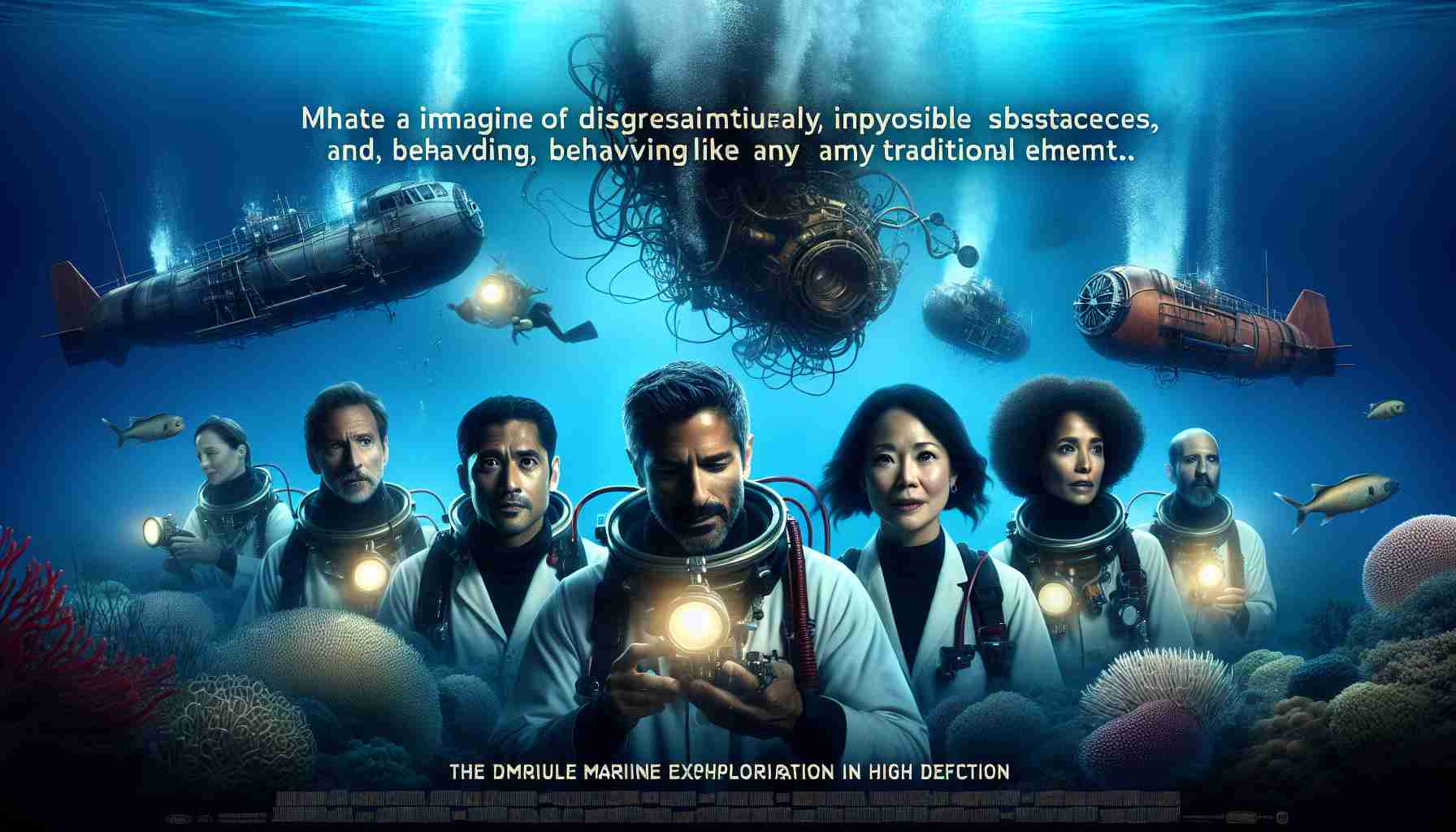New Research Program to Explore Unseen Oceanic Phenomena
In a groundbreaking partnership, Japan’s Nippon Foundation has announced a pioneering research initiative with the Scottish Association for Marine Science (SAMS) aimed at investigating the mysterious substance known as “dark oxygen.” With a substantial investment of £2 million spread over three years, this ambitious project seeks to reveal the complexities of deep-sea chemistry where light cannot reach.
Last summer, a team led by SAMS professor Andrew Sweetman uncovered evidence of dark oxygen present on the Pacific Ocean floor. This intriguing finding suggests that dark oxygen may be generated through the process involving manganese nodules, which are rich in metals like manganese and cobalt. This discovery is particularly significant as it contradicts the long-held belief that oxygen is exclusively produced by photosynthesis in sunlit waters.
As part of this innovative project, researchers will devise an experimental device specifically designed to examine the levels of oxygen and hydrogen at extreme depths of over 11,000 meters. The outcomes of this research could be pivotal in understanding the origins of dark oxygen and assessing its implications on the ecological balance at the ocean’s depths.
The collaboration between the two organizations is poised to shed light on the hidden workings of our oceans and challenge existing scientific paradigms.
Unseen Realms: The Ocean’s Hidden Chemistry
The exploration of dark oxygen in the depths of the ocean could have profound implications beyond the confines of marine science. The study not only enhances our understanding of deep-sea environments but also influences broader societal and economic contexts. As the oceans play a crucial role in regulating Earth’s climate, the findings stemming from this research could inform climate policy and marine conservation efforts globally.
The discovery of dark oxygen challenges traditional narratives about oxygen production, suggesting that geological processes may also contribute significantly. This reshaping of knowledge could lead to a reevaluation of nutrient cycling in ocean ecosystems, impacting industries such as fisheries that rely on healthy marine environments and consequently affecting food security for billions.
Furthermore, the potential environmental impacts are noteworthy. As deep-sea mining becomes increasingly controversial, understanding the role of manganese nodules and dark oxygen in ecological balance is vital. The new knowledge may act as a crucial lever in the debate over sustainable practices in resource extraction, balancing economic interests with ecological integrity.
Looking forward, this research could pave the way for technological innovations in deep-sea exploration, fostering improved methodologies for studying extreme environments. As governments and organizations ramp up investments in ocean health, the implications of this study could resonate through future science, policy, and global collaborations aimed at preserving the planet’s vital resources.
Unlocking the Mysteries of the Deep: Japan and Scotland Collaborate on Oceanic Research
New Research Program to Explore Unseen Oceanic Phenomena
In an exciting development for marine science, Japan’s Nippon Foundation has teamed up with the Scottish Association for Marine Science (SAMS) to launch a groundbreaking research initiative focused on exploring the enigmatic substance referred to as “dark oxygen.” With an investment of £2 million aimed to span over three years, this project promises to enhance our understanding of deep-sea chemistry, an area that remains largely unexplored due to its inaccessibility.
Understanding Dark Oxygen
Last summer, a pivotal discovery made by SAMS professor Andrew Sweetman highlighted the presence of dark oxygen at the depths of the Pacific Ocean. Traditionally, it was believed that oxygen in the ocean is primarily produced through photosynthesis in sunlit zones. The existence of dark oxygen challenges this notion, suggesting that it may originate from chemical processes involving manganese nodules found on the ocean floor, which contain various metals including manganese and cobalt.
Project Objectives and Innovations
The primary aim of this research is to develop a specialized experimental device intended for measuring oxygen and hydrogen concentrations in extreme environments, with depths exceeding 11,000 meters. This technology could provide unprecedented insights into chemical cycles that operate in complete darkness, far removed from the sun’s influence.
The implications of understanding dark oxygen are significant. The research could reshape our knowledge of biogeochemical processes in oceans and how these processes affect ecosystems, potentially leading to newfound perspectives on oceanic life and resource management.
Features of the Study
– Investment: £2 million dedicated to innovative research over three years.
– Depth of Study: Investigating conditions at depths beyond 11,000 meters.
– Experimental Design: Creation of a new device for precise measurement of gases in high-pressure, low-light environments.
Use Cases and Future Insights
The insights gained from studying dark oxygen may extend beyond academic interest. Potential applications could include:
1. Enhancing Environmental Monitoring: Improved understanding of oxygen dynamics could lead to better assessments of ocean health and responses to climate change.
2. Resource Exploration: As manganese nodules are also of commercial interest due to their metallic content, understanding their formation could contribute to sustainable harvesting practices.
3. Natural Resource Management: Findings may inform policies on deep-sea mining and conservation efforts.
Pros and Cons of the Research Initiative
Pros:
– Expands knowledge of deep-sea ecosystems.
– Challenges existing paradigms regarding oxygen production.
– Offers potential economic benefits through resource management and conservation.
Cons:
– Exploring such depths poses significant technical and logistic challenges.
– Environmental impacts of deep-sea research and potential exploitation.
Conclusion and Future Directions
As this initiative unfolds, it is likely to bring forth new scientific paradigms relating to our oceans. The partnership between the Nippon Foundation and SAMS exemplifies a significant leap forward in oceanographic research. The upcoming findings from this ambitious project could lead to a profound re-evaluation of our understanding of ocean chemistry and its ecological implications.
Stay updated on the latest developments in marine science at SAMS.













